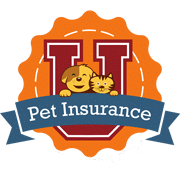Why Changing Your Cat’s Food is Risky
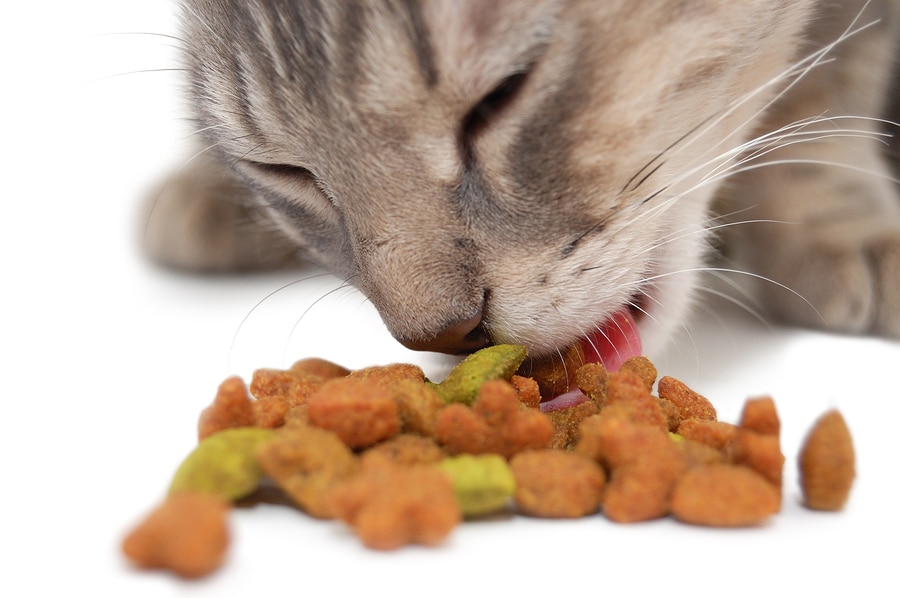
Free Pet Insurance Comparison
Compare Quotes From Top Companies and Save
Secured with SHA-256 Encryption
Dr. Pippa Elliott BVMS, MRCVS
Veterinarian
Dr Pippa Elliott BVMS, MRCVS is a veterinarian with over 30 years of experience in companion animal practice. In 1987 she graduated from the University of Glasgow, with a degree in veterinary medicine and surgery. She works at Blythwood Vets and the People’s Dispensary for Sick Animals (PDSA). Pippa is an advocate of Fear-Free Practice, an animal addict, and a veterinary writer. She is also w...
Veterinarian
UPDATED: Feb 3, 2025
Pet Insurance U receives compensation from the third parties included on this site. This includes payment for clicks from our site to insurance providers’ sites and quote requests generated. Our rankings and reviews are not affected by payments from the insurance companies. The compensation we receive allows the site to be free and regularly updated. Our goal is to review every pet insurance provider, but not all companies are listed on the site.
And many of the companies we review do not pay us anything. We simply rate, compare and review their plan because we feel it will be valuable to you. Our reviews are guaranteed to be unbiased, professional and advertising compensation does not influence rankings.
We are a free online resource for anyone interested in learning more about pet insurance. Our goal is to be an objective, third-party resource for everything pet insurance related. We update our site regularly, and all content is reviewed by pet insurance experts.
UPDATED: Feb 3, 2025
Pet Insurance U receives compensation from the third parties included on this site. This includes payment for clicks from our site to insurance providers’ sites and quote requests generated. Our rankings and reviews are not affected by payments from the insurance companies. The compensation we receive allows the site to be free and regularly updated. Our goal is to review every pet insurance provider, but not all companies are listed on the site.
And many of the companies we review do not pay us anything. We simply rate, compare and review their plan because we feel it will be valuable to you. Our reviews are guaranteed to be unbiased, professional and advertising compensation does not influence rankings.
On This Page
This has happened to too many cat parents. They’re browsing through the cat food aisle when they see a brand new food.
Checking the ingredient list and seeing the picture of a well-fed, happy cat on the label convinces them to buy a few cans (or a bag, if it’s dry) of the new food.
Anticipating a cat who’s eager to try the new food, they go home and put the new food in the cabinet.
At the next meal, their cat may eat the food well enough, a few hours later, when you clean out the litter box, you realize he had diarrhea. Or he vomited. Why? He’s not sick, is he?
Table of Contents:
Need Pet Insurance?
FACT: Pet insurance pays up to 90% of vet bills when your pet is sick or injured!
Why Your Kitty Got Sick With That New Cat Food
Kittens and cats have sensitive tummies. Even though you’re doing everything you can (without going overboard) to be a good cat parent, you may not be aware that your feline has a sensitive stomach.
So, when you try that new food, you may be feeling pretty good—until your kitty starts feeling yucky.
When it’s necessary to change brands, try to have a few cans of the old brand on hand at home so you can help him change over s-l-o-w-l-y.
Cats are creatures of habit. They mentally imprint the foods they enjoy eating because this is, quite literally, a survival tactic.
When they encounter one brand of tuna and ocean fish, then you find a new brand, you may think, “Whatever, it’s the same thing.”
On the surface, yes. If you didn’t carefully read the ingredient lists for both brands, you might not realize that the new food has a slew of new ingredients that the old food doesn’t. Problem time!
Related: 10 Things You Must Know Before You Buy Pet Insurance
Enter your ZIP code below to view companies that have cheap pet insurance rates.
Secured with SHA-256 Encryption
It’s Vital To Make The Change To A New Food Slowly
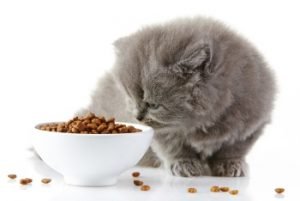
Maybe you’re changing from canned to dry food (more on that soon) or from dry to canned.
Because of your kitty’s potentially sensitive tummy, you need to make that changeover cautiously and slowly.
Give him almost as much as you do of the canned food and only a little dry.
Over two or three weeks, slowly decrease the quantity of canned food and increase the quantity of dry that you feed him.
If you’re changing from dry to wet food, take the same steps.
Now, let’s talk about an all-dry food diet. Cats aren’t great water drinkers. You need to supplement that little amount of water they sort of willingly drink—with canned food.
If you don’t do so, they are more vulnerable to developing urinary crystals, which is highly painful and so, so unnecessary.
Real Cost Savings from PetFirst Clients
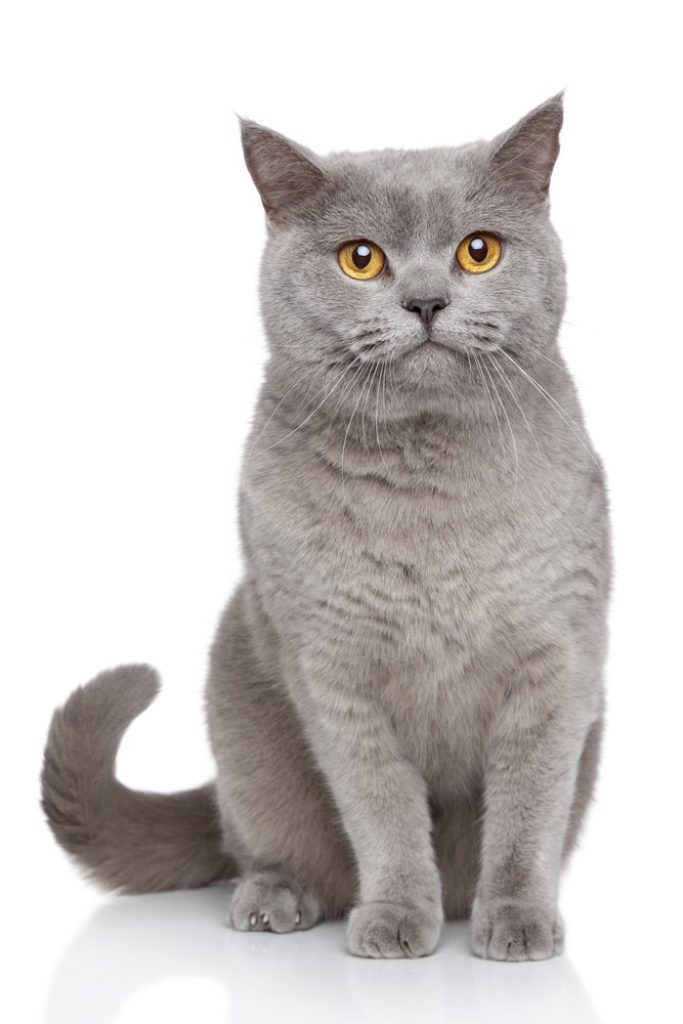
Gidget
PetFirst saved his parents
$2,194
Artemis was a beautiful and friendly cat to all who were willing to pet him. Unfortunately, he developed feline diabetes which required regular vet visits and medications that his Mother could not otherwise afford on her fixed income. Having PetFirst insurance, she called and discussed the problem with a friendly PetFirst agent. To her surprise, she found out that Artemis’ ongoing required vet visits and medication would be covered by his PetFirst insurance. Artemis was able to live out the rest of his life with proper medical care and medicines thanks to PetFirst insurance.
Make The Change Easy For Your Feline
Remember, you have time to make the switch from one brand or type of food to a new brand or type. Combine the old with the new. As you do so, keep an eye on his litter box and your floors to ensure he’s not getting sick.
Choose a sensitive-tummy formula. You’ll see these have lots of chicken and turkey. Look for egg, rice, wheat, and oat to ease stomach issues.
If a friend brings their cat’s rejected foods for your cat to eat, dear pet parent, kindly accept the food—then throw it away, because you don’t know what ingredients it has. Better safe than sorry!
If your cat or kitten’s tummy troubles persist, visit your vet for diagnostic testing. For help paying the bill, check out our review of the highest-rated (9.8/10) cat insurance provider, Healthy Paws.
5 Tips For Getting Your Cat To Eat New Or Prescribed Food
1) Mix new food into old food
First, try to introduce the prescription diet by slowly mixing the new food with the former cat food for five days unless your veterinarian advises otherwise.
Each day, add more of the new food and less of the original diet until your cat is eating the prescription diet exclusively.
You can even throw in some of your cat’s favorite food in little morsels to make it more palatable while switching.
2) Feed many small meals instead of one large one
Feed multiple small meals instead of one large one.
Divide your cat’s daily food portion over three small meals to gradually introduce the new diet and encourage the cat’s appetite.
If your schedule doesn’t permit this, at least transition the food over two meals.
3) Mix dry and canned food
Mix the dry and canned prescription cat foods.
Canned food often smells (and tastes) more appetizing to a cat than dry food.
Factor in your cat’s total calorie intake when you mix wet and dry food so that you do not overfeed him.
In other words, don’t use a whole can when mixing the food if that is the cat’s entire daily intake.
4) Follow the prescription diet as closely as possible
Follow your veterinarian’s instructions about the prescription diet.
Make sure to feed your kitty the correct amount of food for his or her weight and health condition.
If your cat is on a weight maintenance prescription, it is important only to feed him the recommended amount.
Reduce your cat’s food quantity to the prescribed amount gradually so that the cat’s appetite adjusts to the new amount of food.
5) Do not give your cat food outside the prescribed diet or food
Do not give your cat food outside of his prescribed diet. Other food may interact with the prescription or make it less effective.
The prescription diets are scientifically developed to manage specific feline health conditions and provide complete nutrition.
If all else fails, you can always ask your veterinarian for an alternative prescription cat food if he or she refuses to eat the new food after many attempts.
Or you can always go the holistic route and check to see if there is a natural food that addresses your cat’s condition.
It is never easy to transition your cat to a new or even prescribed food, but it can be done.
Be vigilant and clever in how you feed your kitty and hopefully the transition will be easier than you think!
For more advice and help concerning your cat or any of their needs, check out our Cat Blog!
Other articles you may find helpful:
Is Exotic Pet Insurance Necessary?
The Best Pet Insurance By State
Fun Facts, Dog FAQ, And Unsolicited Dog Advice
5 Training Commands to Save Your Dog’s Life
The Ultimate Guide to Safe Foods for Dogs
We have worked hard to provide you with all the free resources possible to help give you insight into the best pet insurance for cats, additional cat breeds info, common cat health issues, and a fun look at frequently asked cat questions.
Other Frequently asked cat questions and some unsolicited catty advice…
Why your cat ignores you when you call it?
How to stop your cat from scratching the carpet?
Can you make a feral cat a pet?
Why does my cat pee outside the litter box?
Why do people walk their cats on a leash?
4 Ways to prepare for a new kitten
10 hidden hazards for indoor cats
Why changing your cat’s food is risky
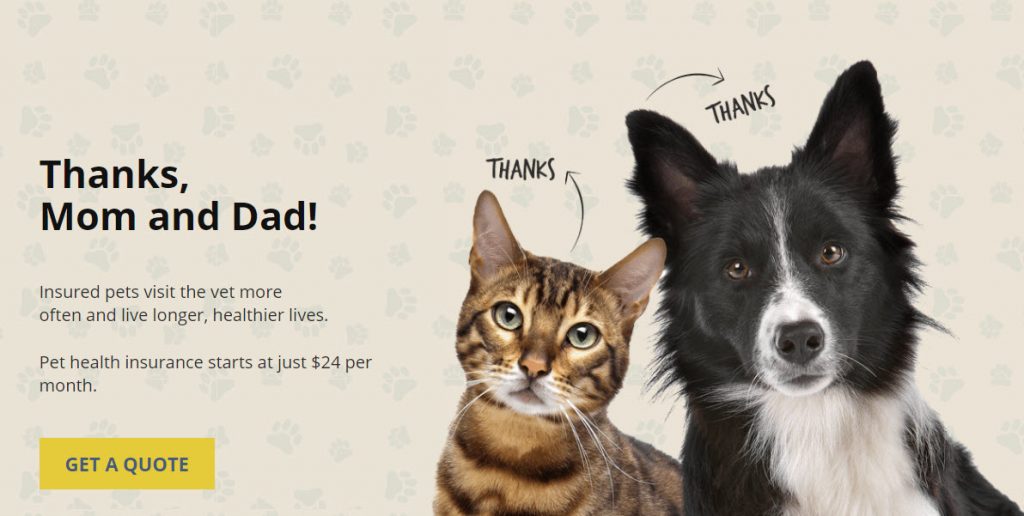
Enter your ZIP code below to view companies that have cheap pet insurance rates.
Secured with SHA-256 Encryption
Frequently Asked Questions
Why did my cat get sick after changing its food?
Cats have sensitive stomachs, and a sudden change in food can lead to digestive issues. Their digestive systems need time to adjust to new ingredients.
How should I transition my cat to a new food?
Gradually introduce the new food by mixing it with the old one. Slowly decrease the old food and increase the new one over two to three weeks.
Are there specific tips for transitioning to dry or wet food?
For dry to wet or vice versa, make the changeover cautiously. If switching to all-dry food, consider supplementing with wet food to ensure proper hydration.
What should I do if my cat refuses to eat new or prescribed food?
Mix the new food with the old one, feed small meals, mix dry and canned food, follow the prescribed diet closely, and avoid giving other food outside the prescribed diet.
Can I get pet insurance to help with veterinary bills?
Yes, pet insurance can cover up to 90% of vet bills for sickness or injury. It provides financial support for your pet’s healthcare.
How does pet insurance work?
Pet insurance reimburses you for covered veterinary expenses. You pay the vet directly and then submit a claim to the insurance company for reimbursement.
Does changing my cat’s food affect pet insurance coverage?
No, changing your cat’s food doesn’t impact pet insurance coverage. However, it’s crucial to monitor your pet’s health and address any issues promptly
Why should I consider pet insurance for my cat?
Pet insurance helps offset the cost of veterinary care, ensuring your cat receives the necessary medical attention without causing a financial burden.
How can I find affordable pet insurance for my cat?
Compare quotes from top pet insurance companies to find the most affordable coverage that meets your cat’s needs and your budget.
Is petinsuranceu.com a reliable resource for pet insurance information?
Yes, petinsuranceu.com is a free online resource providing objective, third-party information on pet insurance. The content is regularly updated and reviewed by pet insurance experts.
Enter your ZIP code below to view companies that have cheap pet insurance rates.
Secured with SHA-256 Encryption
Dr. Pippa Elliott BVMS, MRCVS
Veterinarian
Dr Pippa Elliott BVMS, MRCVS is a veterinarian with over 30 years of experience in companion animal practice. In 1987 she graduated from the University of Glasgow, with a degree in veterinary medicine and surgery. She works at Blythwood Vets and the People’s Dispensary for Sick Animals (PDSA). Pippa is an advocate of Fear-Free Practice, an animal addict, and a veterinary writer. She is also w...
Veterinarian
We are a free online resource for anyone interested in learning more about pet insurance. Our goal is to be an objective, third-party resource for everything pet insurance related. We update our site regularly, and all content is reviewed by pet insurance experts.
